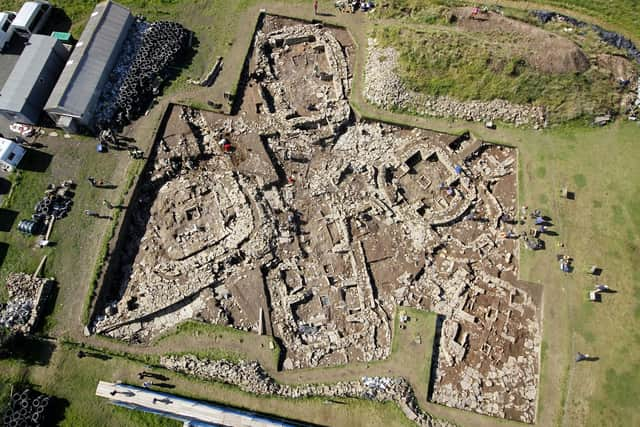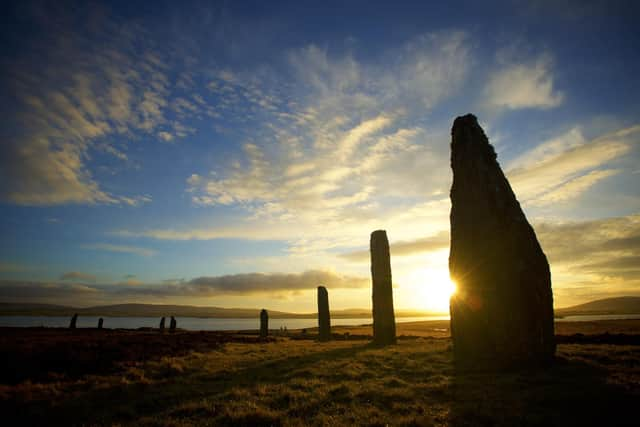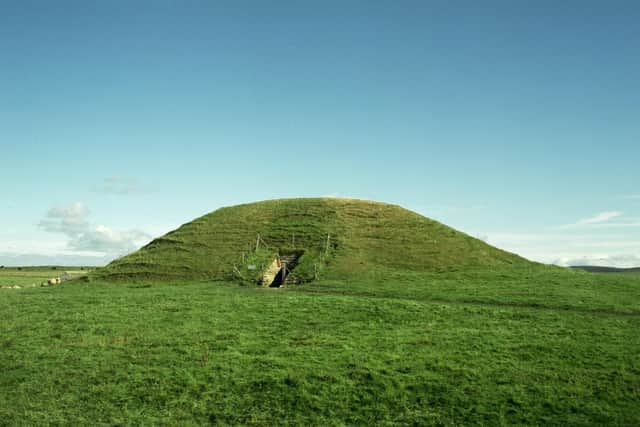Tales of people who gathered at Orkney super site 5,000 years ago unravelled
The Ness of Brodgar has been under excavation over the summer season since 2004, with the six-acre site close to the Ring of Brodgar both continuing to thrill and mystify given the thousands of artefacts which have been unearthed.
Archaeologists have this month returned to Ness of Brodgar for the first time since the pandemic with the site attracting interest from around the world given its scale and ability to challenge ideas about Neolithic society
Advertisement
Hide AdAdvertisement
Hide AdNow, a new exhibition of key objects have been brought together at Ness and Its People, now open at Maeshowe Visitor Centre, which aims to piece together the human activity at the site which is believed to have attracted travellers and craftspeople from across the islands and possibly beyond when Orkney sat high in the social ladder of the Neolithic period.
Katy Firth, exhibition assistant at Stromness Museum, said: “We are finding a lot of evidence of different groups from around Orkney, and possibly outwith Orkney, coming to Ness of Brodgar as a gathering place, a focal point.
“You can build up a strong impression of what was happening at Ness based on the sheer quality of really special finds made here. It shows us that something special was definitely going on here.”
The site, first built around 3,100BC, is known to have changed over time but is known to have been dominated by huge freestanding buildings flanked by a pair of massive stone walls in its early years.


One huge, beautifully constructed building, which measured around 20 metres by 19 metres and topped with a stone-tiled roof, has become known as Structure 10 and would have dominated the landscape of the time, clear for all to see.
The architecture and size of the structures along with evidence of tiles roofs, coloured walls and the recovery of more than 800 examples of decorated stone, allude to an extraordinary place at the heart of a vibrant society.
Ms Firth said a number of objects found at Ness of Brodgar indicated that people possibly travelled from afar to Ness of Brodgar, where finely crafted tools and pottery were made and techniques and ideas likely shared.


Ms Firth said: “Part of the exhibition is called Social Networks and this is looking at objects found at Ness of Brodgar which have come from far flung places.
Advertisement
Hide AdAdvertisement
Hide Ad"We have this piece of Langdale Tuff, stone which comes from a specific place in the Lake District. It’s come here, it has been brought here, and it looks like it was intended to be made into an axe.”
Flints of Arran Pitchstone, a dark volcanic glass, have also been discovered, with the techniques used in their manufacture never seen before.
The concepts of choice and decision making at Ness of Brodgar are also explored in the exhibition given particular stones were selected for particular tools, indicating a deep understanding of the land and its geology.


A striking red macehead from rhodochrosite, probably gathered from the island of Hoy, is among the pieces on show, and indicates a likely precious object of great significance to its owners.
Ms Firth said: “ A lot of the stone tools were picked from certain rock types from different places.
“This type of stone would have been regarded in a really special way and was used to make these really enigmatic tools, such as the macehead.
"We also know that the more special tools were made from more colourful stone, so you can really start to see the different choices that were made here.”
Rhyolite, a pale volcanic rock, is found in one place on Orkney – the Bay of Navershaw near Stromness – and also ended up at Ness of Brodgar.
Advertisement
Hide AdAdvertisement
Hide AdMs Firth said: "The people who came to Ness had knowledge of the land, had knowledge of stone, knowledge of what would happen to it if you put it under heat, for example.
“Rhyolite is found at only one place on Orkney and someone has been to the beach and carried it back to the site, where it was used to use specific chopper tools. They obviously knew it was the best type of stone to make this kind of object.
"Also the fact that so many pieces of polishing tools have been found here suggests that Ness was where a lot of glamourous tools were made. There was large-scale fine manufacturing going on here.”
Almost 800 pieces of decorated art have also been extracted from Ness of Brodgar, with many pieces discovered in places where they couldn’t easily be seen, with some found buried within structure walls.
Other inscriptions, such as those on a collection of stones decorated with butterfly-style markings, only became visible to archaeologists in certain angles of daylight.
Ms Firth added: “The Ness of Brodgar is quite famous for its art but we will never really know if it is art in the way we think of art.
“It’s not visual art as we know it. It could possibly be sacred, it could be a hidden message or a language but the reality is, we will never really know.
The Ness and Its People exhibition runs until Friday 12th August at Maeshowe Visitor Centre. Entry is free.
